-
 Bitcoin
Bitcoin $108,017.2353
-0.81% -
 Ethereum
Ethereum $2,512.4118
-1.58% -
 Tether USDt
Tether USDt $1.0002
-0.03% -
 XRP
XRP $2.2174
-1.03% -
 BNB
BNB $654.8304
-0.79% -
 Solana
Solana $147.9384
-1.76% -
 USDC
USDC $1.0000
-0.01% -
 TRON
TRON $0.2841
-0.76% -
 Dogecoin
Dogecoin $0.1636
-2.09% -
 Cardano
Cardano $0.5726
-1.72% -
 Hyperliquid
Hyperliquid $39.1934
1.09% -
 Sui
Sui $2.9091
-0.59% -
 Bitcoin Cash
Bitcoin Cash $482.1305
0.00% -
 Chainlink
Chainlink $13.1729
-1.54% -
 UNUS SED LEO
UNUS SED LEO $9.0243
-0.18% -
 Avalanche
Avalanche $17.8018
-1.90% -
 Stellar
Stellar $0.2363
-1.69% -
 Toncoin
Toncoin $2.7388
-3.03% -
 Shiba Inu
Shiba Inu $0.0...01141
-1.71% -
 Litecoin
Litecoin $86.3646
-1.98% -
 Hedera
Hedera $0.1546
-0.80% -
 Monero
Monero $311.8554
-1.96% -
 Dai
Dai $1.0000
-0.01% -
 Polkadot
Polkadot $3.3473
-2.69% -
 Ethena USDe
Ethena USDe $1.0001
-0.01% -
 Bitget Token
Bitget Token $4.3982
-1.56% -
 Uniswap
Uniswap $6.9541
-5.35% -
 Aave
Aave $271.7716
0.96% -
 Pepe
Pepe $0.0...09662
-1.44% -
 Pi
Pi $0.4609
-4.93%
What to do if THETA liquidity is insufficient? How to avoid slippage in large transactions?
To manage insufficient liquidity and slippage on THETA, use DEXs, split large transactions, set limit orders, and engage with liquidity providers for better terms.
May 09, 2025 at 12:56 am
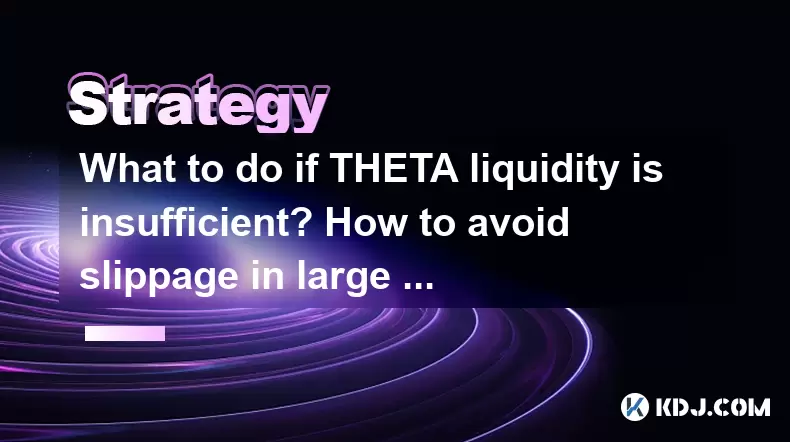
If you're dealing with insufficient liquidity on the THETA network and trying to avoid slippage in large transactions, it's crucial to understand the underlying issues and the strategies you can employ to navigate these challenges effectively. This article will delve into the specifics of liquidity on the THETA network, explore the concept of slippage, and provide actionable steps to mitigate these issues.
Understanding Liquidity on the THETA Network
Liquidity refers to the ease with which an asset can be bought or sold in the market without affecting its price significantly. On the THETA network, liquidity is crucial for ensuring smooth transactions and maintaining the stability of the platform. Insufficient liquidity can lead to higher slippage and price volatility, which can be particularly problematic for large transactions.
To assess the liquidity of THETA, you can look at various metrics such as trading volume, order book depth, and the bid-ask spread. A higher trading volume and a deeper order book generally indicate better liquidity. If you notice that the trading volume is low or the bid-ask spread is wide, it might be a sign of insufficient liquidity.
What Causes Insufficient Liquidity on THETA?
Several factors can contribute to insufficient liquidity on the THETA network. Market conditions play a significant role; during periods of high volatility or uncertainty, liquidity providers might withdraw their funds, leading to a decrease in available liquidity. Regulatory changes can also impact liquidity, as they might cause investors to pull out of the market.
Another factor is the size of the THETA ecosystem. If the network has a limited number of users and participants, the liquidity pool might be smaller compared to more established networks. Additionally, technical issues such as network congestion or smart contract vulnerabilities can deter liquidity providers from participating in the THETA ecosystem.
Strategies to Address Insufficient Liquidity
If you encounter insufficient liquidity on the THETA network, there are several strategies you can employ to mitigate the impact on your transactions.
Use Decentralized Exchanges (DEXs): DEXs often have liquidity pools that can be more resilient to sudden changes in market conditions. By using a DEX, you might find better liquidity for THETA transactions. Ensure you research and select a DEX that supports THETA and has a robust liquidity pool.
Split Large Transactions: Instead of executing one large transaction, consider breaking it down into smaller transactions. This approach can help minimize the impact on the order book and reduce slippage. For instance, if you want to sell 10,000 THETA, you could split it into ten transactions of 1,000 THETA each.
Use Limit Orders: When placing a transaction, opt for a limit order instead of a market order. A limit order allows you to specify the price at which you want to buy or sell THETA, giving you more control over the transaction and potentially reducing slippage.
Engage with Liquidity Providers: Some platforms allow users to engage directly with liquidity providers. By doing so, you can negotiate better terms for your transactions and ensure there is sufficient liquidity available when you need it.
Understanding Slippage in Large Transactions
Slippage occurs when there is a difference between the expected price of a trade and the price at which the trade is executed. This discrepancy can be particularly pronounced in large transactions due to the impact on the order book. On the THETA network, slippage can be a significant concern for traders looking to execute large trades.
The extent of slippage depends on several factors, including the size of the transaction, the liquidity of the market, and the volatility of THETA. In a highly liquid market, slippage is usually minimal, but in a market with low liquidity, even small transactions can cause significant slippage.
How to Avoid Slippage in Large THETA Transactions
To minimize slippage when executing large transactions on the THETA network, consider the following strategies:
Monitor Market Conditions: Before executing a large transaction, monitor the market conditions and liquidity levels. Use tools and platforms that provide real-time data on THETA's trading volume and order book depth. This information will help you determine the best time to execute your transaction.
Use Slippage Tolerance Settings: Many trading platforms allow you to set a slippage tolerance, which specifies the maximum percentage of slippage you are willing to accept. By setting a lower slippage tolerance, you can ensure that your transaction is executed closer to your desired price.
Execute Transactions During High Liquidity Periods: Liquidity tends to be higher during certain times of the day, such as when major markets are open. By executing your transactions during these periods, you can take advantage of increased liquidity and reduce the risk of slippage.
Utilize Advanced Trading Tools: Some platforms offer advanced trading tools, such as algorithmic trading or automated order execution, that can help minimize slippage. These tools can execute transactions more efficiently and at better prices than manual trading.
Practical Steps to Execute Large THETA Transactions
To put these strategies into practice, follow these detailed steps for executing large THETA transactions while minimizing slippage:
Assess the Market: Before executing your transaction, assess the current market conditions. Check the trading volume, order book depth, and bid-ask spread for THETA on your chosen platform.
Choose the Right Platform: Select a trading platform that supports THETA and has a robust liquidity pool. Consider using a DEX if you believe it will offer better liquidity for your transaction.
Set Up Your Transaction: If you decide to split your transaction, calculate the appropriate size for each smaller transaction. Set up limit orders for each transaction, specifying the price at which you want to buy or sell THETA.
Monitor and Adjust: As you execute each smaller transaction, monitor the market conditions and adjust your strategy if necessary. If you notice a significant change in liquidity or volatility, you might need to adjust the size or timing of your subsequent transactions.
Use Slippage Tolerance: If your platform supports slippage tolerance settings, configure them to ensure that your transactions are executed within your acceptable range of slippage.
Review and Confirm: Before finalizing each transaction, review all the details to ensure that everything is set up correctly. Once you are satisfied, confirm the transaction and monitor its execution.
Frequently Asked Questions
Q: Can I use a centralized exchange to improve liquidity for THETA transactions?
A: Centralized exchanges can sometimes offer better liquidity for certain cryptocurrencies, but it depends on the specific exchange and the trading pairs available. For THETA, you should research which centralized exchanges have the highest trading volume and liquidity for THETA transactions.
Q: Are there any tools available to help me monitor THETA's liquidity in real-time?
A: Yes, there are several tools and platforms that provide real-time data on THETA's liquidity. Examples include CoinGecko, CoinMarketCap, and various trading platforms that offer detailed order book information. These tools can help you make more informed decisions about when to execute your transactions.
Q: What should I do if I encounter high slippage despite following the strategies mentioned?
A: If you experience high slippage despite following the strategies, consider adjusting your approach. You might need to further split your transactions into even smaller sizes, choose a different trading platform with better liquidity, or wait for more favorable market conditions. It's also important to continuously monitor and adapt to changing market dynamics.
Q: Is it possible to completely eliminate slippage in THETA transactions?
A: It is not possible to completely eliminate slippage in any cryptocurrency transaction, including THETA. Slippage is a natural part of trading in markets with fluctuating liquidity and volatility. However, by following the strategies outlined in this article, you can significantly reduce the impact of slippage on your transactions.
Disclaimer:info@kdj.com
The information provided is not trading advice. kdj.com does not assume any responsibility for any investments made based on the information provided in this article. Cryptocurrencies are highly volatile and it is highly recommended that you invest with caution after thorough research!
If you believe that the content used on this website infringes your copyright, please contact us immediately (info@kdj.com) and we will delete it promptly.
- Cryptos in July 2025: Massive Gains or Just Hype?
- 2025-07-05 20:30:13
- Pepe's EVM Layer 2 Meme Coin Mania: What's the Hype?
- 2025-07-05 20:50:12
- Shiba Inu, Dogecoin, and the Crypto Skyrocket: What's Making These Memes Soar?
- 2025-07-05 21:10:12
- Tokenized Stocks: Robinhood, Gemini, and the NYSE Threat
- 2025-07-05 21:10:12
- Altcoin Adventures: Navigating the Pepe Fork Frenzy and Solana's Summer Swings
- 2025-07-05 21:15:12
- Hong Kong's Tokenised Bond Leap: Zero Stamp Duty Sparks Web3 Ambitions
- 2025-07-05 20:30:13
Related knowledge
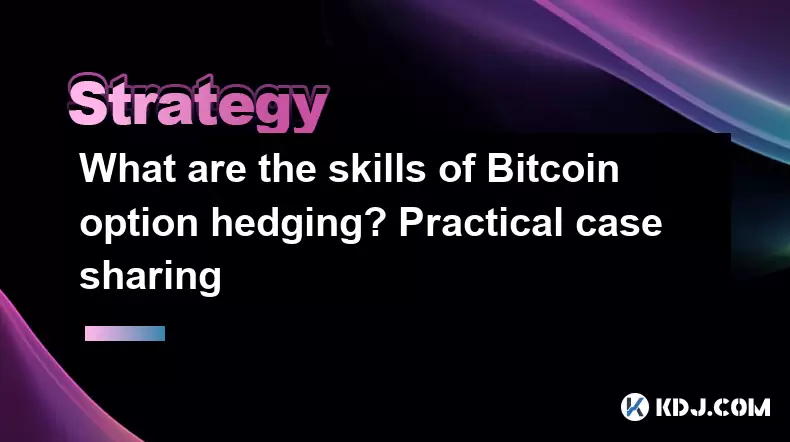
What are the skills of Bitcoin option hedging? Practical case sharing
Jun 24,2025 at 04:01pm
Understanding Bitcoin Option HedgingBitcoin option hedging is a risk management strategy used by traders and investors to protect their positions in the volatile cryptocurrency market. By using options, individuals can limit potential losses while retaining the opportunity for profit. In essence, it allows one to insulate against adverse price movements...
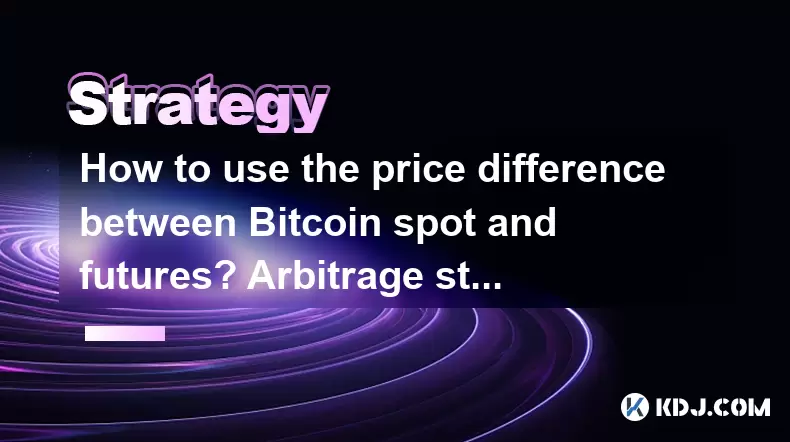
How to use the price difference between Bitcoin spot and futures? Arbitrage strategy
Jun 20,2025 at 02:56pm
Understanding Bitcoin Spot and Futures MarketsTo effectively leverage arbitrage opportunities between Bitcoin spot and futures markets, it's essential to understand the fundamental differences between these two types of markets. The spot market refers to the direct buying and selling of Bitcoin for immediate delivery at the current market price. In cont...

How to increase DeFi lending income? Strategy and risk analysis
Jun 24,2025 at 02:08pm
Understanding DeFi Lending and Its Income PotentialDeFi (Decentralized Finance) lending has emerged as a popular way to earn passive income in the cryptocurrency space. Unlike traditional banking systems, DeFi lending platforms allow users to lend their crypto assets directly to borrowers without intermediaries. The lenders earn interest based on the su...
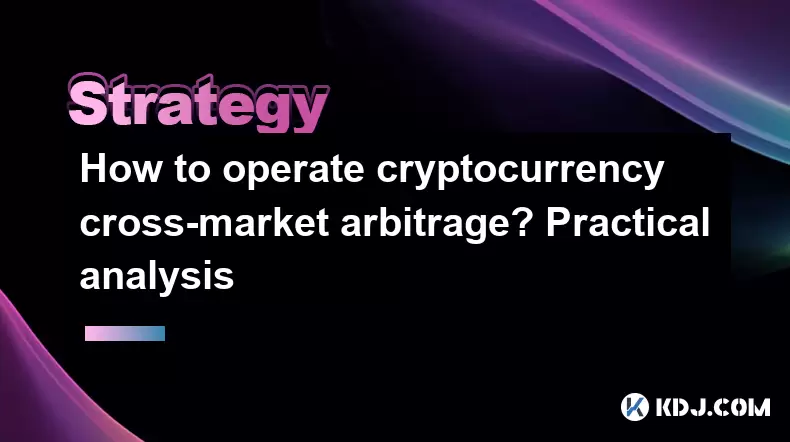
How to operate cryptocurrency cross-market arbitrage? Practical analysis
Jun 23,2025 at 04:01am
Understanding Cryptocurrency Cross-Market ArbitrageCryptocurrency cross-market arbitrage involves taking advantage of price differences for the same digital asset across different exchanges. The core idea is to buy low on one exchange and sell high on another, capturing the profit from the discrepancy. This strategy relies heavily on real-time market da...

How to make profits from high-frequency cryptocurrency trading? Sharing core skills
Jun 19,2025 at 05:07pm
Understanding High-Frequency Cryptocurrency TradingHigh-frequency trading (HFT) in the cryptocurrency market involves executing a large number of trades at extremely fast speeds, often within milliseconds. This method relies on small price discrepancies across exchanges or within a single exchange’s order book. Traders use complex algorithms and ultra-l...
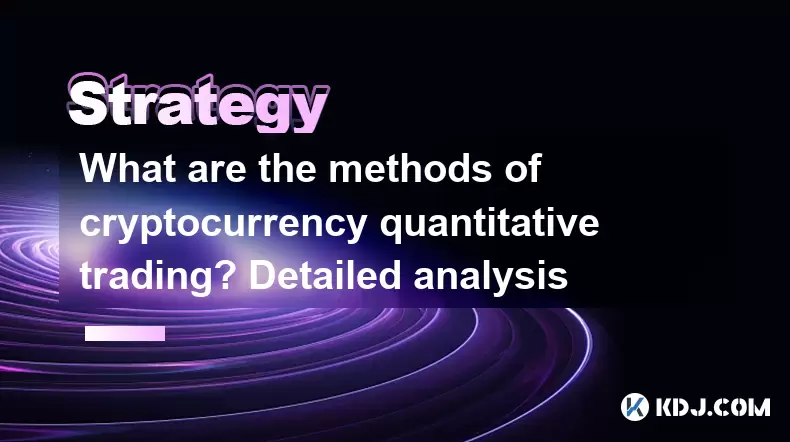
What are the methods of cryptocurrency quantitative trading? Detailed analysis
Jun 22,2025 at 11:07pm
Understanding the Core of Cryptocurrency Quantitative TradingCryptocurrency quantitative trading refers to the use of mathematical models and algorithms to execute trades in the digital asset market. Unlike traditional discretionary trading, which relies heavily on human judgment, quantitative trading leverages data-driven strategies to identify profita...

What are the skills of Bitcoin option hedging? Practical case sharing
Jun 24,2025 at 04:01pm
Understanding Bitcoin Option HedgingBitcoin option hedging is a risk management strategy used by traders and investors to protect their positions in the volatile cryptocurrency market. By using options, individuals can limit potential losses while retaining the opportunity for profit. In essence, it allows one to insulate against adverse price movements...

How to use the price difference between Bitcoin spot and futures? Arbitrage strategy
Jun 20,2025 at 02:56pm
Understanding Bitcoin Spot and Futures MarketsTo effectively leverage arbitrage opportunities between Bitcoin spot and futures markets, it's essential to understand the fundamental differences between these two types of markets. The spot market refers to the direct buying and selling of Bitcoin for immediate delivery at the current market price. In cont...

How to increase DeFi lending income? Strategy and risk analysis
Jun 24,2025 at 02:08pm
Understanding DeFi Lending and Its Income PotentialDeFi (Decentralized Finance) lending has emerged as a popular way to earn passive income in the cryptocurrency space. Unlike traditional banking systems, DeFi lending platforms allow users to lend their crypto assets directly to borrowers without intermediaries. The lenders earn interest based on the su...

How to operate cryptocurrency cross-market arbitrage? Practical analysis
Jun 23,2025 at 04:01am
Understanding Cryptocurrency Cross-Market ArbitrageCryptocurrency cross-market arbitrage involves taking advantage of price differences for the same digital asset across different exchanges. The core idea is to buy low on one exchange and sell high on another, capturing the profit from the discrepancy. This strategy relies heavily on real-time market da...

How to make profits from high-frequency cryptocurrency trading? Sharing core skills
Jun 19,2025 at 05:07pm
Understanding High-Frequency Cryptocurrency TradingHigh-frequency trading (HFT) in the cryptocurrency market involves executing a large number of trades at extremely fast speeds, often within milliseconds. This method relies on small price discrepancies across exchanges or within a single exchange’s order book. Traders use complex algorithms and ultra-l...

What are the methods of cryptocurrency quantitative trading? Detailed analysis
Jun 22,2025 at 11:07pm
Understanding the Core of Cryptocurrency Quantitative TradingCryptocurrency quantitative trading refers to the use of mathematical models and algorithms to execute trades in the digital asset market. Unlike traditional discretionary trading, which relies heavily on human judgment, quantitative trading leverages data-driven strategies to identify profita...
See all articles

























































































